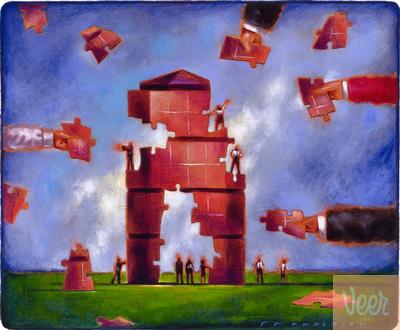 The class started with a discussion on the famous Alibaba Group. It is a privately owned Hangzhou based family of internet based e-commerce business that cover end to end business through online marketplaces, retail and payment platforms, shopping search engine and data centric cloud computing services.
The class started with a discussion on the famous Alibaba Group. It is a privately owned Hangzhou based family of internet based e-commerce business that cover end to end business through online marketplaces, retail and payment platforms, shopping search engine and data centric cloud computing services.The company began in 1999 with the web domain Alibaba.com. It has three major marketplaces. The company’s English language international marketplace (www.alibaba.com) serves to bring together importers and exporters from more than 240 countries and regions. Alibaba was founded by Jack Ma whose objective in creating Alibaba was to empower SME through the power of internet.
The discussion then shifted to Organizational Culture. Just like individuals, organizations possess their own personalities. It is important for a manager to understand how culture is created and communicated throughout the organization. The organization envelops values and work ethic that contribute to its social and working environment.

Culture is a consistent, observable pattern of behavior in an organization. Aristotle said, "We are what we repeatedly do." This view elevates repeated behavior or habits as the core of culture and reemphasizes what people feel, think or believe. It also focuses our attention on the forces that shape behavior in organizations.
There are various types of organizational culture. Few of them are discussed below:
- Open Culture - One where employees are motivated to voice their values-driven concerns regarding problematic business practices. An open culture helps to counteract any occasional lapse into passivity at the board level or on the part of institutional investors.
- Safety Culture - Safety culture is the ways in which safety is managed in the workplace, and often reflects "the attitudes, beliefs, perceptions and values that employees share in relation to safety". Here, all employees are proactive in ensuring safety at work place. People immediately report any perceived short comings in the work place safety and in the safety of products given to customers or clients.
- Quality Culture - A culture where utmost importance is given to the quality of the product or service being rendered. Volume takes a back seat. So does cost. Batch recalling of cars/computers when defects are found is a good example of the quality culture. Toyota is a notable example.
- Performance Culture - We could also call this Outcome Oriented Culture. This is one that emphasize achievement, results, and action as important values. A good example of an outcome-oriented culture may be the electronics retailer Best Buy. Having a culture emphasizing sales performance, Best Buy tallies revenues and other relevant figures daily by department. Employees are trained and mentored to sell company products effectively, and they learn how much money their department made every day.
- Ethical Culture - A culture where great importance is given to ethical business practices and this importance is seen at all levels in the organization. We see that in such organizations, ethics are given precedence even if being so may lead to a loss of business and profit. The TATA Group is a good example to note.
Secondly, organizational culture is dynamic. They shift, incrementally and constantly, in response to external and internal changes. So, trying to assess organizational culture is complicated by the reality that you are trying to hit a moving target. But it also opens the possibility that culture change can be managed as a continuous process rather than through big shifts (often in response to crises). Likewise, it highlights the idea that a stable "destination" may never — indeed should never — be reached. The culture of the organization should always be learning and developing.
Organizational culture is shaped by and overlaps with other cultures — especially the broader culture of the societies in which it operates.
No comments:
Post a Comment